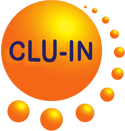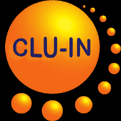Search Result from the August 2010 Issue
| Return to Search | Return to Results |
FIELD EVALUATION OF BIOLOGICAL ENHANCED REDUCTIVE DECHLORINATION OF CHLOROETHENES IN CLAYEY TILLScheutz, C., M.M. Broholm, N.D. Durant, E.B. Weeth, T.H. Jorgensen, P. Dennis, C.S. Jacobsen, E.E. Cox, J.C. Chambon, and P.L. Bjerg. Environmental Science & Technology, Vol 44 No 13, p 5134-5141, 2010
A pilot test was conducted to investigate the performance of enhanced
reductive dechlorination (ERD) for in situ remediation of
cis-1,2-dichloroethene (cDCE) and vinyl chloride in clayey till. Following the
injection into a sand-filled hydraulic fracture of a dilute groundwater
solution containing emulsified soybean oil and Dehalococcoides bacteria,
fermentation of the ERD solution established a dechlorinating bioactive zone
in the fracture within one month. By 148 days, all the cDCE in the fracture
was dechlorinated to ethene. Analysis of a clay core from day 150 indicated
that electron donor and fermentation products diffused from the fracture at
least 10 cm into clay and that stimulated dechlorination occurred in the clay
in the presence of Dehalococcoides (7.9.104 cells/g). Comparison of
chloroethene profiles in the day 150 core to modeled diffusion profiles
indicated that degradation occurred in a bioactive zone extending ~5 to 6 cm
into the clay matrix. The data suggest that a bioactive zone established in a
sand-filled fracture can expand into the adjacent clayey till matrix and
facilitate mass transfer from the matrix to the bioactive zone. These findings
offer promise for ERD and support further development of methods for deploying
ERD in clayey till and other low-permeability deposits.
The Technology Innovation News Survey welcomes your comments and
suggestions, as well as information about errors for correction. Please
contact Michael Adam of the U.S. EPA Office of Superfund and Emergency Management at adam.michael@epa.gov or (703) 603-9915
with any comments, suggestions, or corrections.
Mention of non-EPA documents, presentations, or papers does not constitute a U.S. EPA endorsement of their contents, only an acknowledgment that they exist and may be relevant to the Technology Innovation News Survey audience.




